World-Famous or Legendary Muskie “Hotspots” – Part II
Category: article
Feb 10th, 2021 by Keith Worrall
Modified Feb 10th, 2021 at 11:29 AM
World-Famous or Legendary Muskie “Hotspots” – Part II
by Larry Ramsell, Muskellunge Historian
Here we go with Part II of muskie “Hotspots”, and I doubt if there is a serious muskie angler who has ever fished Eagle Lake in northwestern Ontario, that has not heard of (and most have likely fished) Coleman’s Reef. This reef complex is in the eastern end of the main basin of this 70-mile-long lake, near Eagle River.
Coleman’s Reef
The Legend started in 1939 and this reef has become increasingly popular ever since. The three world records crazy year of 1939 ended with John J. Coleman as the King. The following is Mr. John J. Coleman’s own story, taken from my “Compendium of Muskie Angling History” 3rd edition, Volume II”, of catching this biggest of all muskies and the first ever verified 60-pound muskellunge; one of only a handful caught in the history of our sport that I am comfortable with, over 60-pounds, that were legitimate and verified:
“To an experienced member of the Izaak Walton fraternity,
there would undoubtedly have been nothing unusual in the morning of October 3. It was gray and a trifle chilly and the rain pocked the surface of the lake in little craters as far out as the eye could see.
“As our two boats pushed away from the pier there was absolutely nothing in the air or in our minds to forewarn us that this day was to hold the greatest thrill of our fishing lives.
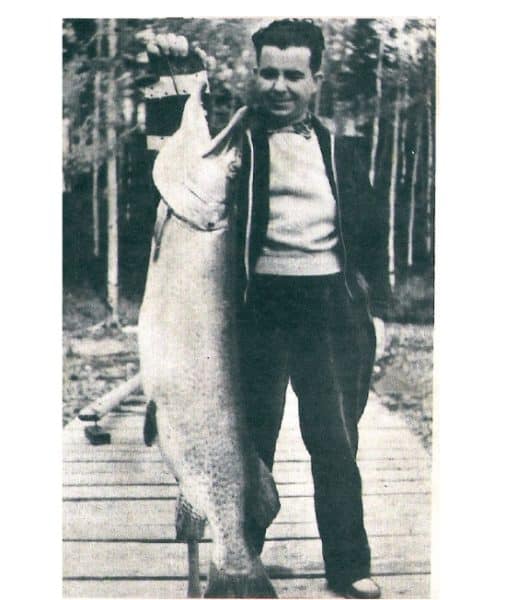
John J. Coleman 60-8 Eagle Lake, Ontario – 1939
“I’m not much of a fisherman. Bud, a real angler, had invited me to join his party for a few days of muskie fishing at big Eagle Lake, some six miles from Eagle River, Ontario. I had accepted more with the expectation of good company and good food around the camp fire than from any very great desire to catch a fish. In fact, I didn’t even have any equipment.
“We had driven hard all the day before and pulled into the camp (McKenzie’s Big Eagle Lodge) past midnight. After breakfast in the main lodge the next morning our party assembled at the pier. George and Art, the guides, had two boats ready. They were 16-footers with 8 hp outboard motors, each big enough to accommodate two anglers and a guide.
“It was decided that Art would go along with Bud and Kay, while George shepherded the two tyros, Ray and me. Bud had lent me one of his rods and a reel and his favorite bait – a Pikie Minnow, somewhat dulled in color from much use and many fish caught.
“We pushed off after promising to meet for lunch on a nearby island. The boats kept fairly close together, with George expertly keeping us near the rocks and shallows, where the muskies were likely to be lurking.
“A fairly uneventful morning passed, with the rain dripping steadily down and dampening our spirits, as hour after hour slipped by with no catch. I had had only one good follow – a muskie that decided against my bait at the last moment – and it was pleasant to find ourselves in the vicinity of the island just before noon. A good lunch would restore our spirits and send us into the afternoon with our optimism renewed.
“Bud’s guide had already started his outboard and was heading for the island and Ray was suggesting that we follow him when George motioned me to make one last cast. I did, and nothing happened. Well, I’d try just one more.
“Scarcely had the bait plopped on the surface near the rocks when whang the granddaddy of all muskies struck like a thunderbolt and streaked away. George quickly got the boat into deeper water, shouting encouragement and instructions as I clumsily played the fish. Bud noticed that we had hooked something interesting and his boat soon came alongside.
“The big muskie hauled and veered as far out as the line would take him, and charged under the boats several times. After what seemed to be hours, George decided our catch was ready for landing, and I brought him up to the side. As he lay flopping in the bottom of the boat the usual guessing went on, with our estimates as to his length and weight varying with our inexperience. I guessed around 40 pounds while Art was inclined to believe the big fish would go over 50. Bud, with years of salt-water fishing to back him up, ventured that he wouldn’t be surprised to see the scales go to 55.
“Of course, there was no more thought of lunch on my part. With the party’s congratulations ringing in my ears, George and I pushed off for camp immediately to get our fish weighed. Ray stayed on the island with Bud, Kay and the guide to lunch on walleyes, eggs, bacon and coffee.
“As soon as we landed back in camp my prize was weighed and measured. You can imagine the thrill when we learned that I had caught the largest muskie ever taken from the water on a line! He (she…LR) weighed 60 pounds 8 ounces, and measured 58 1/2 inches in length and 31 1/2 inches in girth.
“The usual pictures were taken and the big fish sent off to be iced and prepared for shipment to the taxidermist.
“The fruits of victory are sometimes not so sweet as they seem. Take my case, for instance. Overnight I have been converted from a lukewarm angler to a red hot fisherman – all through the accidental and unforeseen circumstance of catching a record fish. Now I’ll probably be a fisherman until I die. But my future is already behind me. Instead of working onward toward an inviting and possibly unattainable goal, which is one of the great thrills of fishing, or any other sport, I have blundered in at the top, and from now on every victory will seem paltry compared with one already achieved in the distant past.
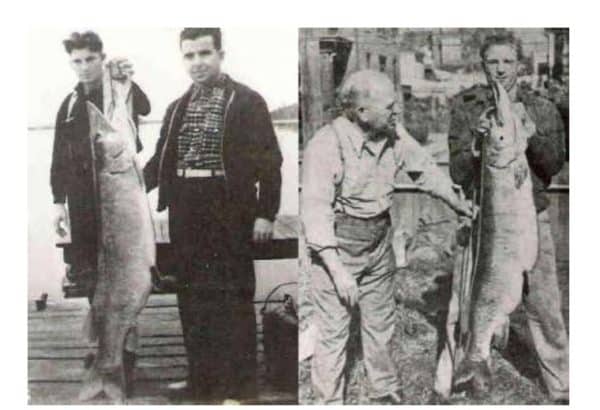
Left photo shows Coleman (r) with guide George Perkins (l) and the right photo shows Coleman’s fish at Storey Taxidermy in Duluth, MN.
Figures right? Again, Coleman’s muskie was the first muskie ever caught exceeding 60-pounds and the Legend of Coleman’s Reef was born.
At any rate, the story behind Coleman’s fish proves that novice muskie fishermen have just as good a chance to catch a record fish as do the experts. In one well-placed cast he had shown the best in the world that beginners could be kings too, but; his reign was short lived as 1940 produced three fish larger than his! And one of them came from near the other end of Eagle Lake by a guest of Andy Myers Lodge, caught in Vermilion Bay and near the town of the same name. This fish was caught at a spot known ever since as Muskie Point (aka World Record Point).
Muskie Point
Ontario made a bid to regain the record in 1940. In fact, the catch was almost one year to the day from Coleman’s 60-pound 8-ounce record, making Eagle Lake the first body of water in the world to produce a second muskie in excess of 60 pounds. Edward Walden’s 1940 Eagle Lake monster weighed in at 61 pounds 9 ounces and for 48 years stood as the Ontario muskie record. It also held the record for all of Canada.
Edward Walden, (once incorrectly spelled Waldon) was an experienced muskellunge fisherman. According to the Dryden Observer at the time, supplied to me by Gordon Bastable of Vermilion Bay Lodge on Eagle Lake (who also supplied a great new photograph), which was obtained from relatives of Walden’s guide George Titze. Additional information here is
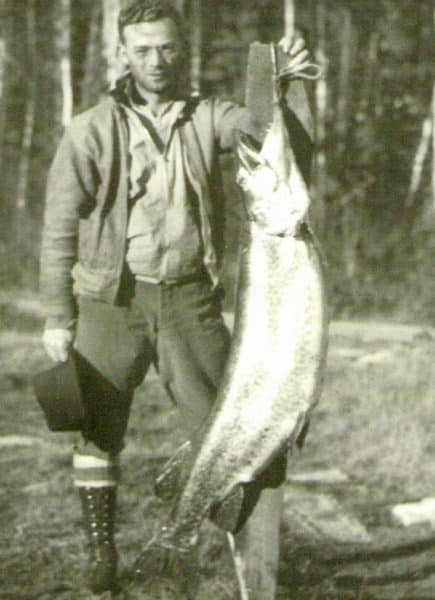
Edward Walden 61-9 Eagle Lake, Ontario – 1940 Photo courtesy Gord Bastable
also taken from my “Compendium of Muskie Angling History” 3rd edition, Volume II”.
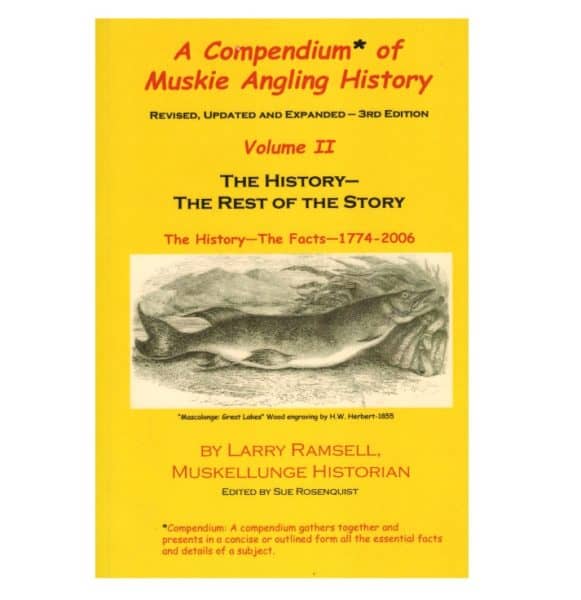
...”The fish was caught by Ed Walden of Chicago, a guest at Andy Myer’s camp, and when weighed twelve hours after being caught, it tipped the scales at 61 lbs. and 9 oz. The girth was 31 inches and 59 inches is the length of the big muskie which is being mounted by L. F. Lotze, of Waldhof. Believe it or not, the monster was landed on a light bass rod and it took 55 minutes to land.
“With Mr. Walden in the boat were Thos. Power…Dr. E.D. Patnaude…Oliver Koester…and Dr. Van Dan…as well as the guide, Geo. Titze.”
“Field & Stream magazine added the following. “…Walden was casting a #12 Pflueger muskill in Vermilion Bay on Tuesday, October 8, when he buried the hooks in the huge fish. Walden had battled the fish for exactly 56 minutes before he managed to bring it aboard and subdue it. His Gladding 30 lb. test Invincible line, Gephart rod and Coxe reel stood to the test of the record proportioned ‘lunge.”
Author’s note: I have serious doubt that Walden was using a “light bass rod” if casting, as the size of a #12 Pflueger muskill just isn’t compatible with being “casted” on a light bass rod, nor would the line guides on said rod accommodate the diameter of 30lb. Gladding line of 1940! Perhaps he was trolling…likely since there were six people in the boat.
Next, we drop down a bit in western Ontario to a lake well known for muskies, but not a real serious “go to” muskie lake. Rainy Lake is located in the SW corner of Ontario on the border with the US.
Now I have heard of muskies being called Monsters, Bloody Monsters, Super Tankers, Submarines, Freight Trains, Slobasaurus’s, Giants, Brobdingnagians, Leviathans, Pigs, Horses, Big Sonabitches, Little Sonabitches, and a dozen or so scientific genius names, the current one the longest lasting; Esox masquinongy and over 150 spellings of their Species names or derivatives from various Indian names, etc., with the current official names being Muskellunge in the U.S. and Masquinongy in Canada, but I have never heard them called Elephants.
Elephant Rock
However, this next Hotspot is called Elephant Rock! It is located in the NE corner of Rainy Lake, Ontario in an area called Redgut Bay. In retrospect, I believe that spot name derives from the shape of the rock reef at that location, rather than a name for the giant muskie that is/was supposed to reside there who was named “Old Bismark”.
To best tell the tale of Old Bismark, I shall quote from that great book “Muskie Mania”, published in 1977 by Ron Shara. To pick up the story:
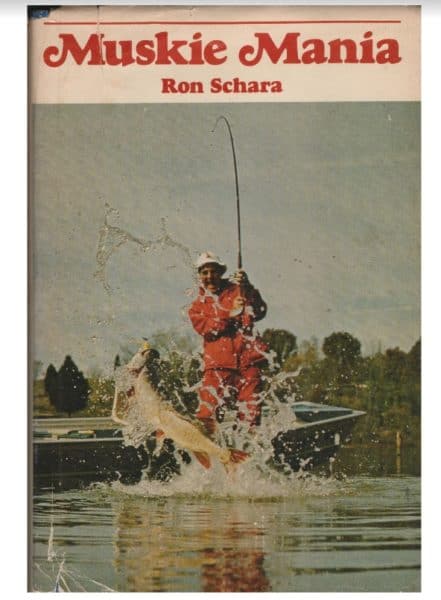
“…Old Bismark is so named because she’s a muskie of a ship, some 8 feet long, say the natives. Or was it 9 feet? She’s been hooked at least twice and seen more often than that—always within the shadow of Elephant Rock, which looks like an elephant lying on its side in shallow water.

Just add water and you have Elephant Rock!
“Old Bismark is said to go 100 pounds. And the last time she was hooked, an old Indian guide testified that she cruised around for the better part of an hour attached to the treble hooks. But she tired of that game, glided next to the boat and charged off in a powerful rush that simply straightened her wire captors.”
Saying that Old Bismark had not been seen for about two years, Shara’s fishing partner asked him if he wanted to try Elephant Rock.
…”He didn’t have to wait for an answer”, Shara continued. “The waters surrounding the giant, two-humped chunk of granite were glassy silent on the windless morning. Carl cut the outboard several hundred feet away from the rock and we quietly glided within casting range.
“The surrounding wilderness was like a tomb. Not a gull or loon peep.
“Nervously, I reared back on my muskie rod and heaved a surface plug within inches of Elephant Rock. The ripples scattered. I twitched the plug. Nothing happened. I twitched it again. The ripples formed…and all hell broke loose.
“A colossal wall of water erupted. The plug disappeared. Water flew in all directions. I leaned back quickly on the rod. I was stunned. Was this Old Bismark?
“I never found out. Whatever it was, the damned thing missed the plug.
“Nor do I know if there really is such a fish as Old Bismark. Doesn’t matter. When a simple surface strike near a chunk of rock can make electric butterflies in a man’s stomach, when it can jiggle the knees and stop the heart, then there is an Old Bismark in Redgut Bay. What’s more, there are other Old Bismarks scattered throughout the muskie waters of North America.
“That’s what the eternal search is all about, if only in the minds of muskie men.”
Could not have been said better and that is also what gets Elephant Rock on our list with Legendary status!
I am sure that there are many other Hotspots that I am not aware of even though I have fished muskies in 23 states and 2 provinces of Canada over the past 65 years. Any reader who knows of one or more Legendary or famous Hotspots, please let me know with a write-up of same and supporting photos if available and I will include them in a follow-up article(s).
Send it to me at: larryramsell@hotmail.com
Thank you!